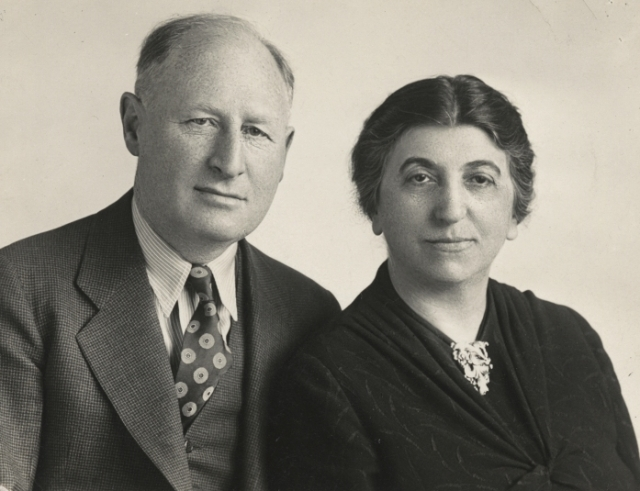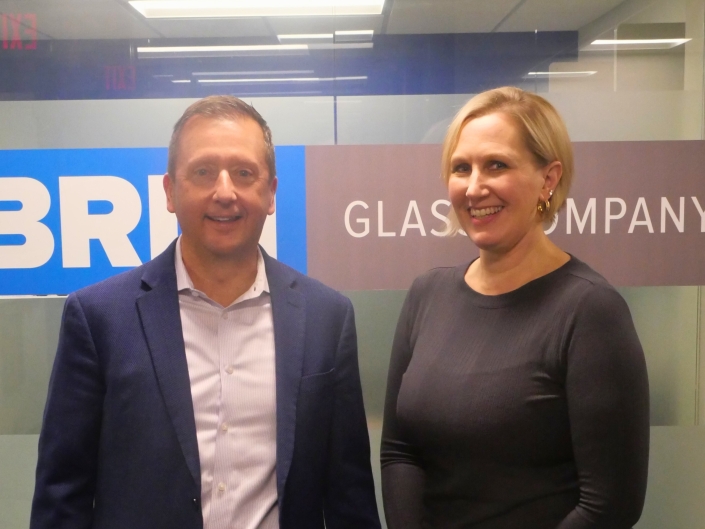
This year, Brin Glass is celebrating its 113th anniversary. Similarly, Glass Magazine is celebrating 75 years of publication in 2025. Brin Glass was founded in 1912 by Arthur Brin. The company's legacy can be seen in projects all across Minneapolis. Skyscrapers, hotels and skyways still exhibit exterior and interior windows from decades past.
How it began
Brin Glass began in 1912 when Arthur Brin and his employees started working out of an aged warehouse on 1st Street North Loop, Minneapolis, Minnesota. For six years, Brin’s operations ran out of this location, slowly building a name for themselves and gaining public recognition. In 1918, toward the end of World War I, Brin relocated to a larger, custom-built warehouse at 600 Washington Avenue North.
During World War I, the Great Depression, and World War II, Brin Glass kept operations running. Into the next decades, Brin’s Minneapolis clientele included the interior windows of the IDS Tower, Multifoods Tower, and the Sears Roebuck Tower (now known as the Midtown Global Market).
On November 7, 1947, Arthur died suddenly from a heart attack in his home at the age of sixty-seven. His son Howard became Arthur’s successor. Howard had already been working at Brin after graduating from Harvard University and serving in World War II. But due to his father’s passing, he became the president and CEO of Brin overnight.
Purchasing a custom-made $100,000 mirror machine in 1959 (a modern-day equivalent of $1 million), Howard began crafting both windows and mirrors for clients. In 1963, one of Brin’s clients was the Capp Towers Motor Hotel, completed with 330 outward-facing rooms. On the top of the hotel, a domed glass structure built by Brin towered over the cocktail lounge. Brin’s custom glasswork appeared in Life Magazine on July 26, 1963. Under Howard’s leadership during the 1950s and ‘60s, Brin Glass grew to scale through organic expansion as well as acquisitions. The first major acquisition happened in 1955 when Brin acquired Northwestern Glass Company.
In 1978, Howard sold the company to Doug Nelson and Larry Waller, both aspiring businessmen with backgrounds in accounting and finance. The following year, in 1979, Nelson and Waller decided to consolidate Brin and Northwestern into one company but run them as separate corporations under the name “Brin-Northwestern Glass.” In the late 1970s, Brin also acquired St. Germain’s Glass, a Duluth glass company in business since 1891, and continued to expand their divisional branch strategy. In 1986, Brin’s former president (1996-2006), Patrick Rome, was hired as a controller at Brin-Northwestern. In an era full of new acquisitions, Rome became a central player in Brin’s expansion alongside Bill Sullivan, Stan Mariska, and Doug Nelson. In 1990, Nelson acquired Heartland Glass Company in Waite Park near St. Cloud. The same year, Nelson promoted Sullivan (future CEO), an employee of Brin since 1984, to operate as general manager of Heartland Glass.

In 2016, Sullivan became president.
Brin today
In January of 2024, Sullivan publicly announced the first stage of his succession plan. Priscilla Koeckeritz was named as president of Brin Glass, marking the first female president for Brin. Coming in with a vast background in leadership roles, Koeckeritz’s expertise centers on both marketing and operations strategy. When Koeckeritz first joined Brin in January of 2021, her role as a chief marketing officer helped establish Brin’s marketing strategy. Soon after, the team began to harness her multi-industry expertise, and her role expanded.
“That first year was an adventure …it was really fun to get to build that [Brin’s marketing]. A little over a year later, I was in the weeds on all kinds of projects, operations processes, even getting into some of the financial rhythms,” says Koeckeritz.
A year after taking on the role as the president of Brin Glass, Koeckeritz assumed the role of CEO.
Looking to the future, Koeckeritz plans to continue in Sullivan’s footsteps of people-oriented leadership.
“Being an ESOP, we’re employee-owned, but we’re also union strong. When I walked in at first, I thought that was going to be a difficult challenge. Our labor force is predominantly union. But when you actually get to have conversations, people are people…they bring their ideas, they bring their questions and suggestions," says Koeckeritz. "Bringing those people groups together, those teammates together for the betterment of the business, our customers, and our market has been really rewarding. More rewarding than I thought.”